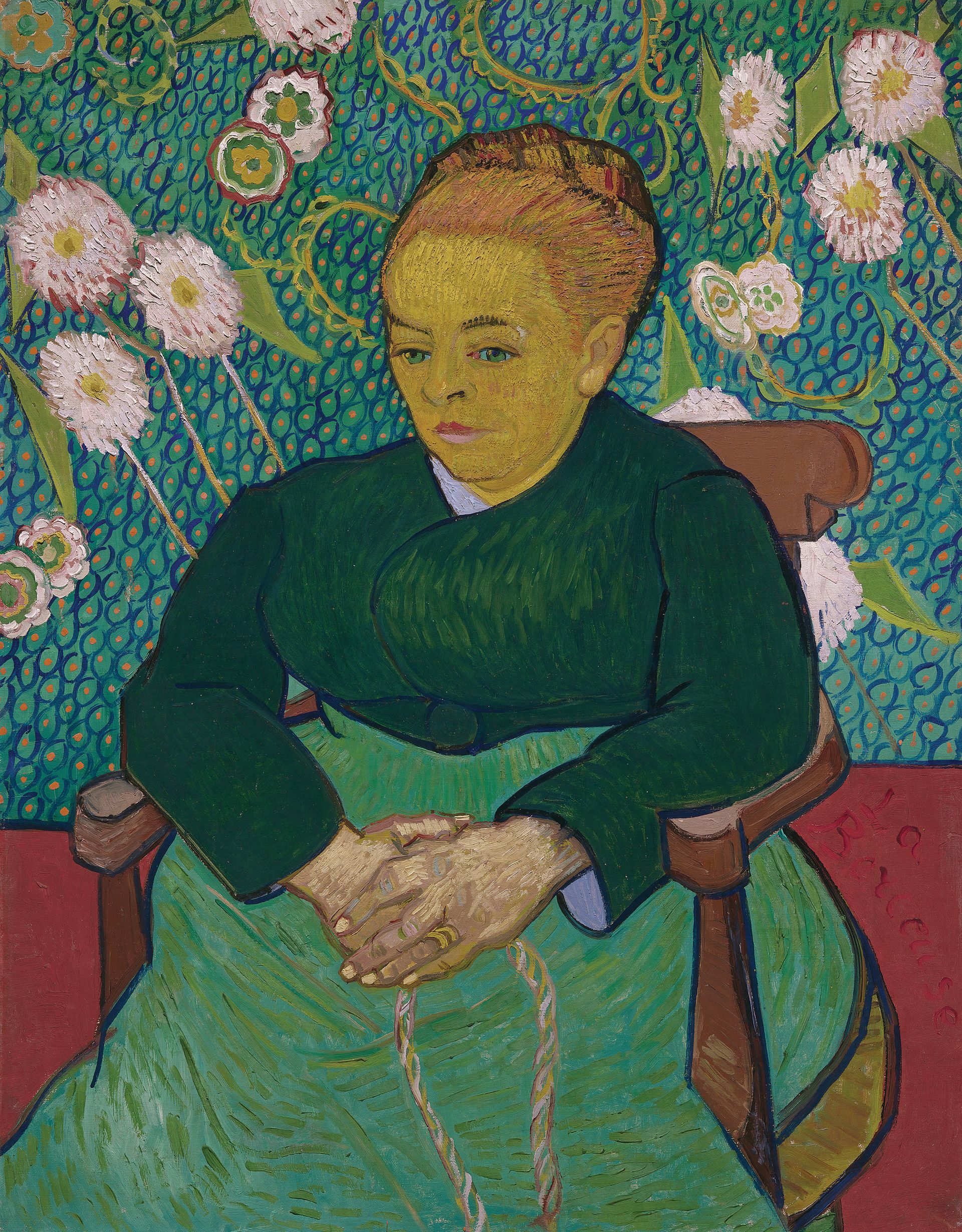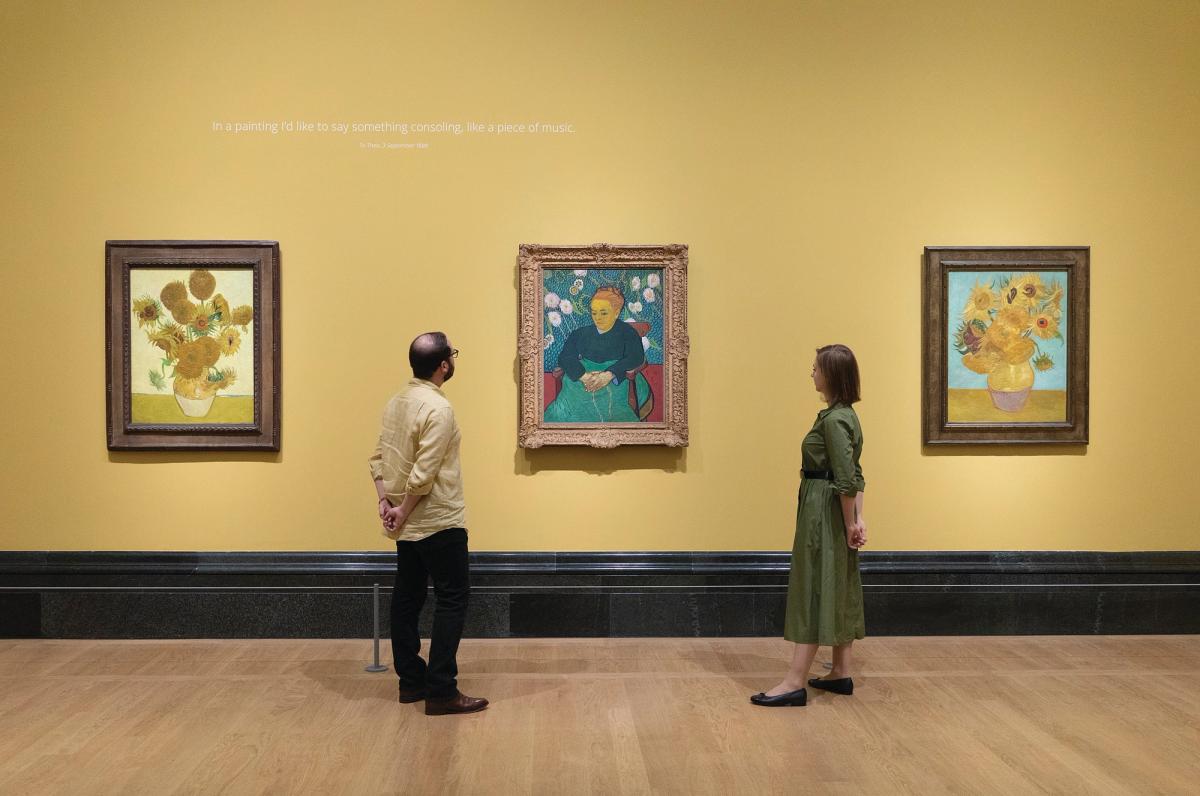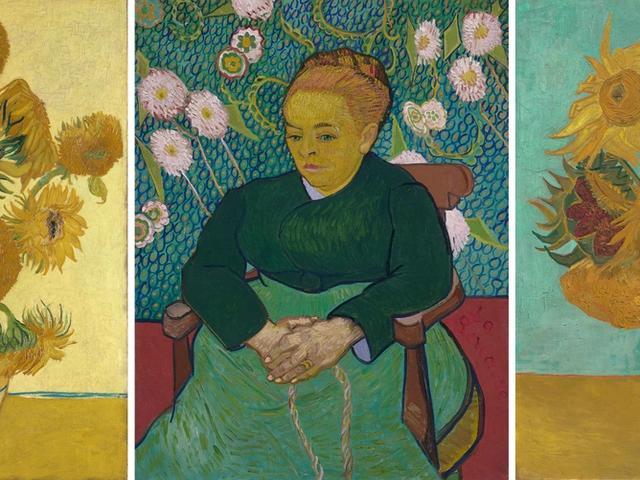The National Gallery has successfully assembled a remarkable group of Vincent van Gogh (1853-90) works from the artist’s greatest period. When it comes to curating a Van Gogh exhibition, every loan represents a challenge. Altogether the gallery is showing 47 paintings and 14 drawings, making it one of the largest shows on the artist in recent years. Tickets will almost certainly sell out and the show will be busy.
The exhibition’s subtitle, Poets and Lovers, may come as a surprise, but it indicates that the curators are focusing on the thoughts that inspired Van Gogh’s imagination and art—not on the more sensational aspects of his personal life and struggles.
The compact opening room introduces the theme, by presenting two portraits. The first is of “the lover”, lieutenant Paul Milliet, the Zouave regiment soldier who Van Gogh saw as a ladies’ man (on loan from the Kröller-Müller Museum, Otterlo). The artist wittily commented on his friend: “Milliet’s lucky, he has all the Arlésiennes he wants, but there you are, he can’t paint them, and if he was a painter he wouldn’t have any.”
The second portrait is of “the poet”, based on his Belgian artist friend Eugène Boch (Musée d’Orsay, Paris). The thoughtful-looking sitter did not write poetry, but Van Gogh perceived him as a sensitive soul. As Van Gogh put it: “I’ve painted him as something of a poet, his refined and nervous head standing out against a deep ultramarine background of the night sky, with the twinkling of the stars.”
The twin portraits, separated on the wall by a landscape with two strolling lovers in the public garden outside the Yellow House in Arles, set the scene for a thematic display of Van Gogh’s work in Provence. All the rooms (except for a smaller one with drawings from the hill of Montmajour) show works from both his period in Arles (February 1888-May 1889) and at the asylum outside Saint-Rémy-de- Provence (May 1889-May 1890).
This mixture of periods means that visitors lose sight of the rapid development of Van Gogh’s work, but the gain is that one can see the various ways that he tackles a subject. The four main rooms of paintings and drawings are each on a theme: poetic interpretations of “the garden”, the Yellow House as an artist’s home, “decoration” (or how Van Gogh wanted to present his work) and “variations on a theme”.
Starry sights

Vincent Van Gogh; Self-Portrait; 1889; Oil on canvas; 57.8 × 44.5 cm; National Gallery of Art; Washington; Collection of Mr. and Mrs. John Hay Whitney; 1998.74.5
Image Courtesy National Gallery of Art; Washington
The loans include some of Van Gogh’s most important paintings. It was a coup to get both The Yellow House (Van Gogh Museum, Amsterdam) and a version of The Bedroom (Art Institute of Chicago), giving a deep insight into his home. This room also includes his magical Starry Night over the Rhône (Musée d’Orsay) and the magnificent Self-portrait from the National Gallery of Art in Washington, DC. All these major works are brought together in just one, hugely impactful room, along with other key works from Van Gogh’s time in Arles.
There are also important works from private collections which are rarely seen. The Poet’s Garden, in the introductory room, has not been exhibited for decades and is more impressive than it appears in photographs. Steve Wynn, the former casino boss, has lent The Trinquetaille Bridge. The Paris-based Fondation Louis Vuitton is now known to be the owner of The Public Garden, Arles.
Another achievement in the “decoration” room is to present Van Gogh’s idea of a triptych, with two of the Sunflowers surrounding Madame Roulin Rocking the Cradle (La Berceuse). The National Gallery owns the Sunflowers on a yellow background, which is displayed with one of Van Gogh’s two versions on a blue background, this one on loan from the Philadelphia Museum of Art. It is the first time that Philadelphia has lent the picture since its acquisition in 1963. At the centre of the triptych is a version of La Berceuse (Museum of Fine Arts, Boston), facing us like a secular Madonna.

Vincent van Gogh; Lullaby: Madame Augustine Roulin Rocking a Cradle (La Berceuse); 1889; oil on canvas; 92.7 x 72.7 cm; Bequest of John T. Spaulding (48.548)
© Museum of Fine Arts; Boston
Although this year represents the centenary of the acquisition of the National Gallery’s Sunflowers, little is made of this in the exhibition, presumably because it would have distracted from the overall theme.
All the three paintings are displayed in imposing frames, hung some distance apart, although Van Gogh wanted them to almost touch, like an altar triptych. He envisaged them presented in simple, slender wooden frames. The two Sunflowers would have been in natural pine and the frame for La Berceuse painted red. Such an arrangement would have been quite impossible in a museum setting, where we expect masterpieces in appropriate frames and positioning. In Van Gogh’s time, he could not sell his work. This triptych could now theoretically be worth around a billion dollars.
Lovers in landscapes
Once engrossed in the show, visitors are likely to forget the Poets and Lovers subtitle. Only two paintings feature small vignettes of a loving couple and the artist arguably added them to landscapes mainly to lend scale and movement. Just four paintings feature the small park opposite the Yellow House that Van Gogh dubbed the “poet’s garden”, because he imagined it could have provided inspiration for Renaissance poets.
The presentation of the exhibition is refreshingly simple, with prominent numbers on the walls by each painting or drawing (and no caption text). A free, and very helpful, booklet guide is available, giving brief details on each work. Museumgoers will not have to crowd around labels, but will be left to enjoy the paintings.
Visitors are encouraged to focus purely on the art, to forget the tortured (and often mythologised) story of the artist’s life. We can almost forget that nearly half the paintings in the show were actually done in a mental asylum after the artist had mutilated himself.
The final impression, at least for me, is of Van Gogh’s astonishing achievements in Provence, where he lived for just over two years. He completed around 200 paintings in Arles and 150 in Saint-Rémy, which works out at one every two days. The National Gallery exhibition offers an unusual opportunity to see 47 of them, plus the drawings. Don’t miss the chance.
What the other critics said
Laura Freeman in The Times describes the National Gallery show
as a “beautifully put-together exhibition about a blisteringly original vision”. Jonathan Jones of The Guardian calls it “a daring, dazzling exhibition”. Alastair Sooke in The Daily Telegraph writes that “the sense of rapture is breathtaking... what an uplifting exhibition”. Chris Harvey in The Independent says it is “beautifully staged... unmissable”. Melanie McDonagh of The Standard suggests it will be “the exhibition of the year”. All gave the show five stars.
- Van Gogh: Poets and Lovers, National Gallery, London, until 19 January 2025
- The Art Newspaper's rating: the work ★★★★★; the show ★★★★★
- Curators: Cornelia Homburg and Christopher Riopelle
- Tickets: £28 (concessions available)




